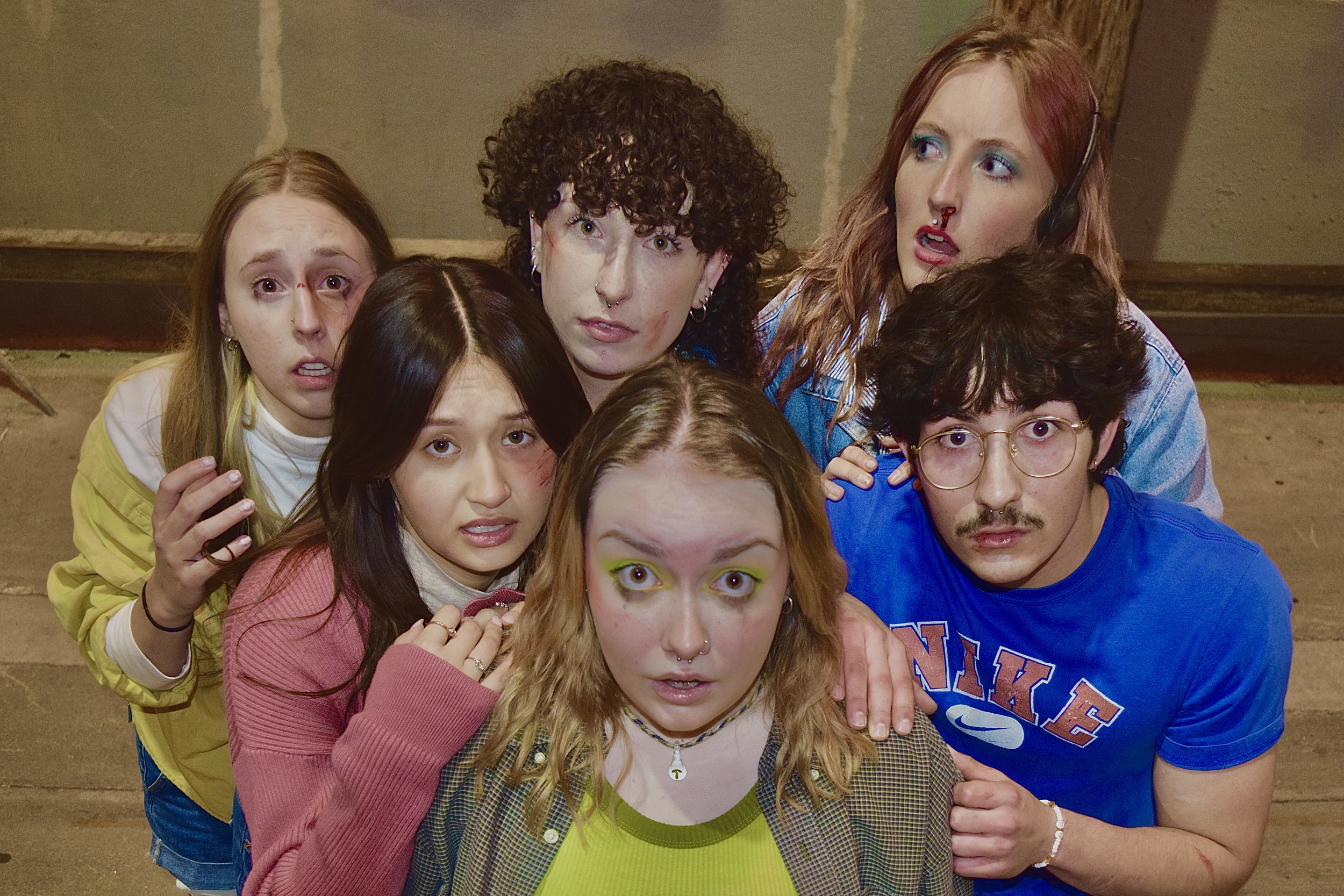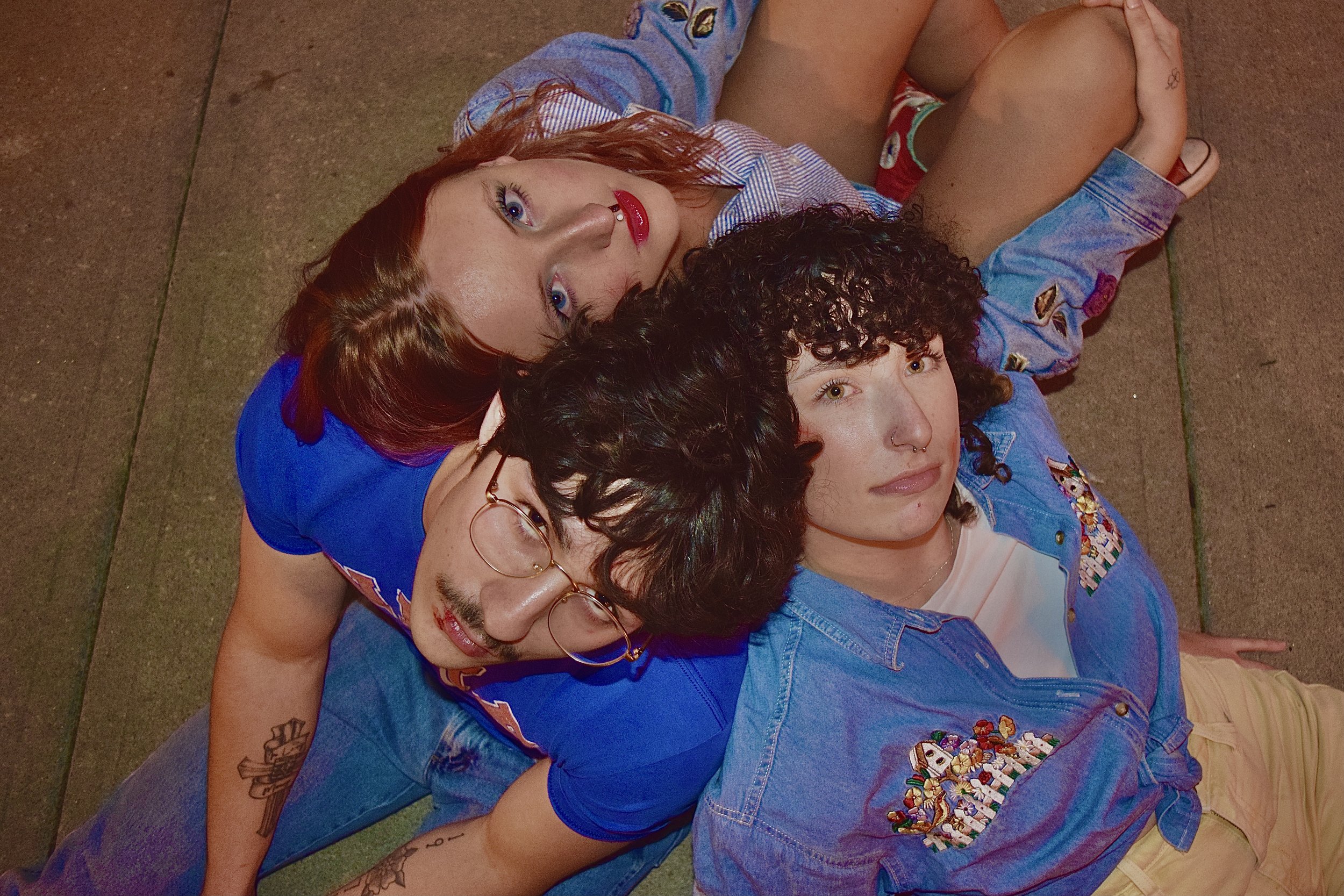Surviving in Style: How Final Girls Define Fashion in Horror Cinema
Creative Directed, Writing & Makeup by Kylyn Williams & Alyssa Roney
Photography by Madison Guetzkow
Modeled by J.D. Downing, Lily Elcan, Ellie Edwards, Rachael Mueller, Rachel Schmieder, & Mollie Williams
In the eerie glow of the silver screen where nightmares come to life lies a hidden realm where fashion meets fear. Since the first female-centered hits of the 70s, “Black Christmas” and “The Texas Chainsaw Massacre,” horror movies have not only captivated audiences with their bone-chilling tales, but also serve as unexpected trendsetters in the world of fashion.
The 1970s also saw the rise of one of the most popular tropes in the horror genre: the final girl. The final girl derives her name from her role within the movie. The final girl, as implied, is the last person to survive the carnage inflicted by the villain. While this trope, like the Mary Sue trope, comes with the good intention of creating strong female leads, it is problematized due to the underlying traits that come with the women destined to survive. For example, the final girl is often seen as young, pure and often virginal. The viewing public, much like the real-life cult of female chastity during China’s Ming Dynasty, prioritized the lives of “pure” women over their “impure” counterparts. The implication, in essence, is that deviant women should suffer in place of the final girl. Of course, the final girl is not without suffering: the audience watches the final girl suffer the loss of her friends through an often voyeuristic gaze.
From this point on in the article, there will be spoilers for the movies “Scream,” “Halloween,” “The Texas Chainsaw Massacre,” “Bodies Bodies Bodies,” “Midsommar” and “Pearl.”
Horror movies like "Scream," "Halloween" and "The Texas Chainsaw Massacre" have undeniably left a mark on fashion trends for women, blending the horror elements with the fashion each final girl presents. These women were trendsetters for the fashion of their decade.
As we enter the 1970s, 1974 specifically, we meet Sally Hardesty of “The Texas Chainsaw Massacre.” Sally is a picture perfect image for the styles of the 70s. From her long blonde hair down to her large white bell bottoms, she encapsulates the simple and beautiful yet conventional outfits of her decade. While almost effortlessly pursued by Leatherface and his cannibalistic family, Sally heroically fights her way through terrifying situations in style.
The 70s to 80s trends took a big switch, with Laurie Strode kicking off new trends in John Carpenter's 1978 hit, “Halloween.” Laurie is one of the most, if not the most, famous final girl of all time. Not only was she the hero of her story, single handedly fighting off Michael Myers alone, but she looked good doing it. Her dark earth toned outfits, usually accompanied with a cardigan or sweater, were emulated many years after the film, even now. Long floral skirts and tights as well as dark blue bell bottoms served as iconic staples to Laurie's look.
Moving on to another iconic movie and protagonist, we get to Sydney Prescott from the “Scream” franchise. Sydney's outfits in the first Scream movie blend elements of 90s casual and classic horror film style, reflecting her relatable yet resilient character. Throughout the film, Sydney is often seen in a mix of high-waisted jeans, cropped tops and oversized jackets, capturing the essence of the era's fashion. Her wardrobe subtly evolves with the narrative, transitioning from youthful innocence to empowered survivor, symbolized by her iconic white sweater stained with blood — an emblem of her ordeal and resilience in the face of terror.
More recently, horror movies with female protagonists prioritize feminine strength along with aesthetics. There has also been a shift in the final girl archetype, with many movies introducing multiple final women or even shifting the dynamic of the final girl to become an anti-hero or villain.
In “Bodies Bodies Bodies,” the two survivors of a party gone terribly wrong are both queer women. Men being killed off first was not a novel idea, but the director’s decision to do so in order to spotlight the personalities of marginalized women was. The fashion in this movie is incredible, with characters adorning colored braids and alternative styles, a nod to modern fashion trends. Likewise, Ari Aster’s “Midsommar” embodies the quote that “you either die a hero or you live long enough to become the villain.” Dani, masterfully played by Florence Pugh, has a different style than the other women mentioned. She is usually seen wearing sweatshirts, t-shirts and sweatpants of muted colors throughout the film. Dani suffers through brutal deaths of her friends at the hand of the Hulga and eventually chooses to sacrifice her boyfriend, Christian, solidifying her high status within the clan. The sacrifice is not the only change in Dani, though, as she is also adorned in beautiful flowers and feminine clothing at the end of the movie. “Pearl,” likewise, showcases the idea of a villainous female protagonist. Pearl is, ironically, the paragon for final girl morality: she prioritizes chastity, and her wardrobe indicates this. She is most known for her overalls and modest red dress, worn during her most iconic and sinister scenes. Frilly dresses and bows do not make for perfect girls, though, as the audience would later bear witness to her murderous rampage.
The final girl is as aesthetically pleasing as she is virtuous, but is a figment of our imagination. While characters like Laurie Strode captured the public’s attention with their distinctive looks, they reveal our own prejudices about what it means to be a proper woman. As modern tropes have shifted to accommodate for inclusive views of what the final girl should look like, her outfits became less indicative of a time lost. The final girl trope is here to stay, but her look has changed entirely.










